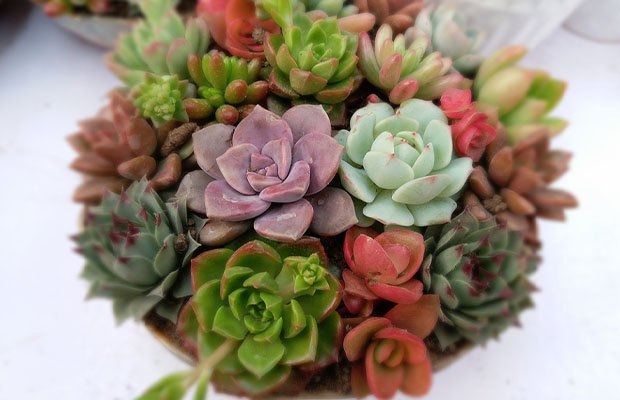We want to get it right because watering succulent plants is probably one of the most important aspects of growing them. The water needs for succulents are very different from those of other plants, necessitating a change in watering practices for seasoned gardeners or people who frequently grow houseplants. How much water do succulents need?
Despite the fact that there are numerous factors that affect the answer to this question (which we will discuss later!), the general rule of thumb is that you never want your succulent to stand in water. Remember that overwatering is the main reason why succulents die.
Learn more about water succulents by reading on.
You May Also Like:
Table of Contents
How Much Water Do Succulents Need?
Succulents are frequently misunderstood as not needing watering. However, despite the fact that most succulents are drought-tolerant because of their fleshy, engorged leaves and stems that retain water, they still require less frequent hydration.
The amount and frequency of watering for succulents depend on where they are growing. Think about temperature, wind, and humidity as additional factors. Indoor succulent cultivation requires less water than outdoor cultivation.
Watering Succulents Indoors
While your succulents are growing, you should water the specimen once a week. You must give the soil a good soak before you can properly water your plant.
Stop watering as soon as you notice that water is draining through the holes in the bottom of the pot. The best watering technique is the “soak and dry” method, which ought to be used only after the soil has completely dried out.
Inserting a bamboo stick deeply into the ground is a simple way to determine the moisture content of your soil. For a few minutes, let it rest. Your plants don’t need water if the post appears damp or if the soil is wet. Only add water if the stick is simple to remove and appears to be completely dry.
During the dormant season, you won’t need to water your succulents as frequently. It’s time to water the plants, though, if you see any signs of wilting.
However, if you keep your summer plants inside and heated throughout the winter, they need more frequent watering—once per week.
Watering Succulents Outdoors
Your watering schedule when cultivating succulents outdoors depends on the climate and growing season. The soil dries out more quickly and needs more frequent watering, up to three times per week, in high temperatures and windy conditions.
Related Reading: How to Care for Outdoor Succulents?
What Factors Affect How Much I Water My Succulent?
Some of the variables that may affect the amount of water to give a succulent include:
- Container type– The succulent can receive more water if the container has a drain hole because any extra water will drain out. You must be especially careful not to submerge the roots in water if the container doesn’t have a hole. Furthermore, succulents in smaller clay pots can tolerate a little bit more water but dry out more quickly.
- How it was planted– putting pea gravel in the bottom of your planter boosts the succulent’s roots up off the bottom of the planter leaving room for excess water. Pea gravel also makes it easier for air to enter the pot from the top, hastening the drying process. You can replant your succulent if it isn’t already in pea gravel. Here’s how.
- Succulent location– Your succulent can tolerate more water if it is outdoors in the heat and wind than if it is inside.
- Succulent size- larger plants take more water than smaller plants.

How Often To Water My Succulent?
During the months that do not winter, when the temperature is above 40 degrees, you should water your succulents every other week. You should only water your succulent once a month in the winter (when the temperature falls below 40 degrees), as it goes dormant at this time.
Related Reading: How Often & How to Water Succulents?
How To Tell If I Overwatered Succulents?
Succulents that have been overwatered will develop rotted stems or roots because the soil remains so wet. The roots have already begun to rot before the rot gets to the stem.
You’ll also notice that the leaves become mushy, clear, or translucent. Additionally, split or cracked leaves can be seen.
You can try to save your plants if you overwatered your succulents but not to the point where you noticed rotting.
Start by removing the succulent from its container. Next, gently brush away all of the soil from the plant, including any extra dirt still attached to the roots.
Look for rot by inspecting your plant. Disconnect the plant from the rotted area if you notice any damage. It might be necessary to cut off all the roots and begin again.
Give the plant’s healthy parts a few days to air-dry. After that, plant the fragments in newly prepared, dry soil.

















